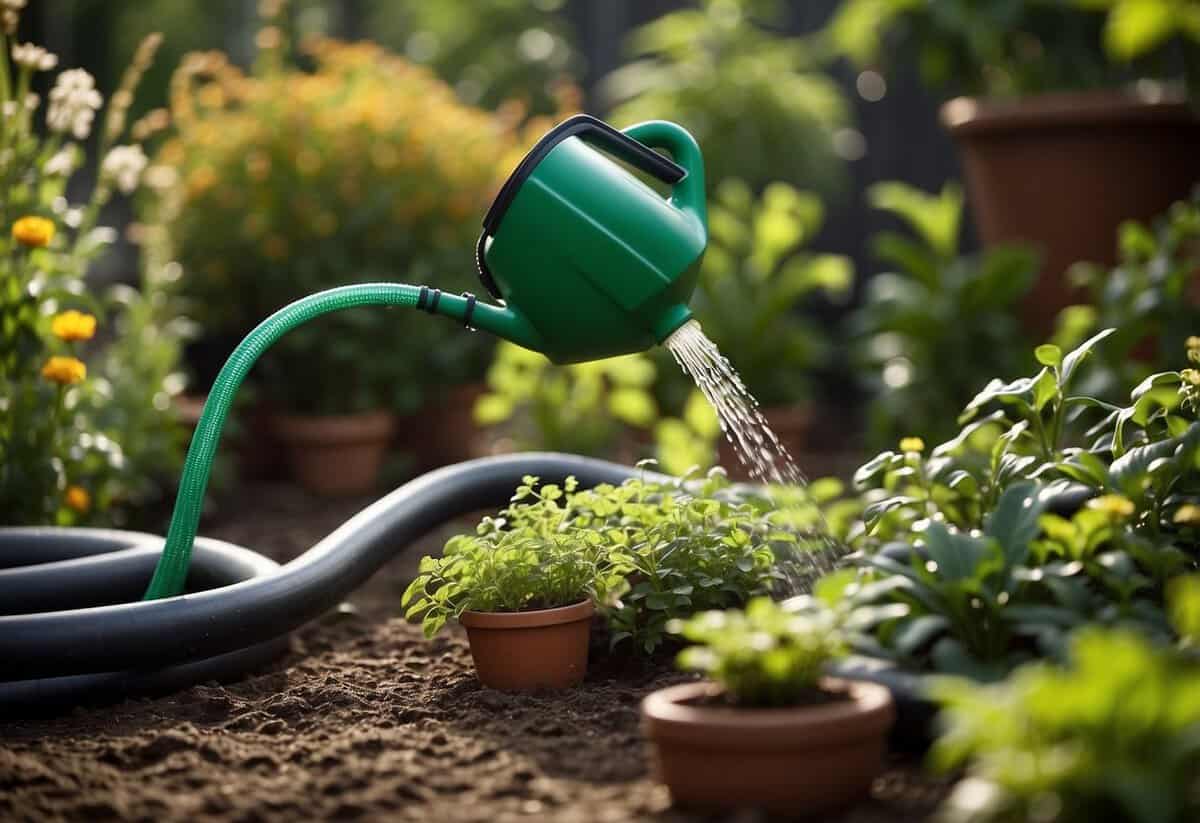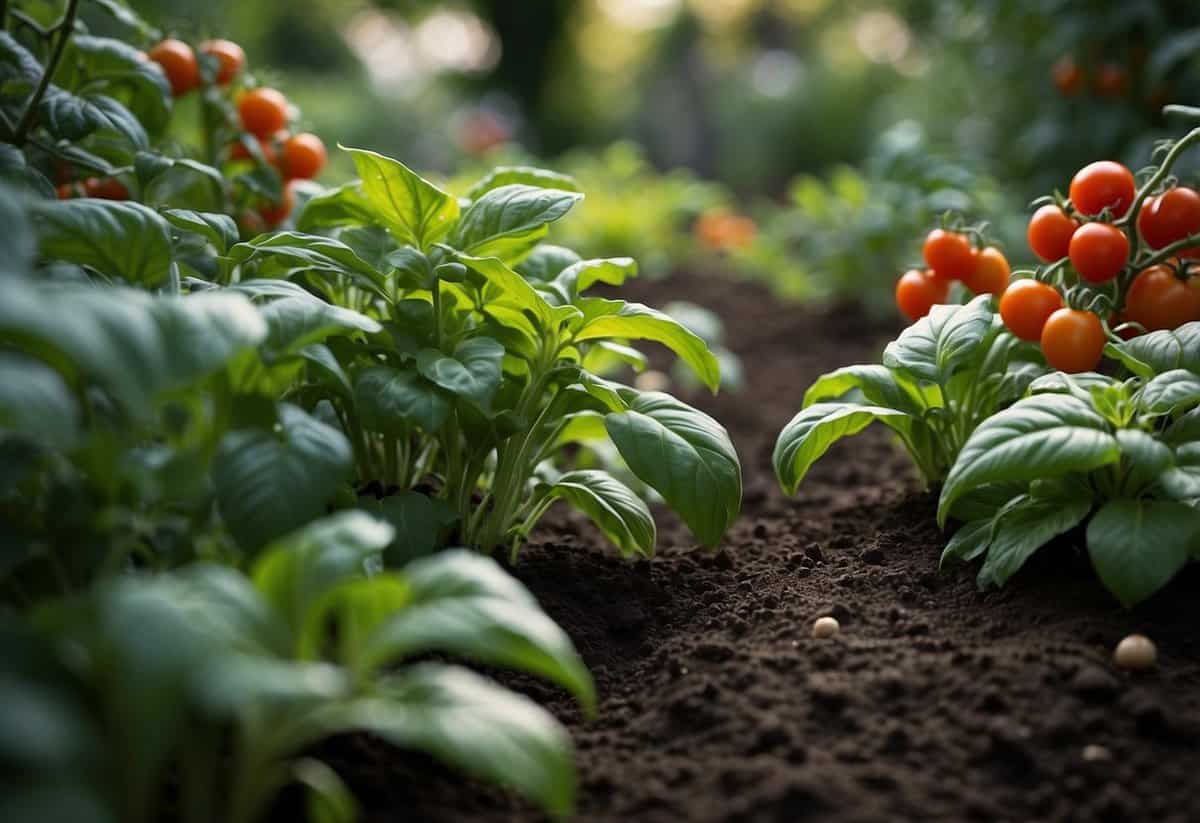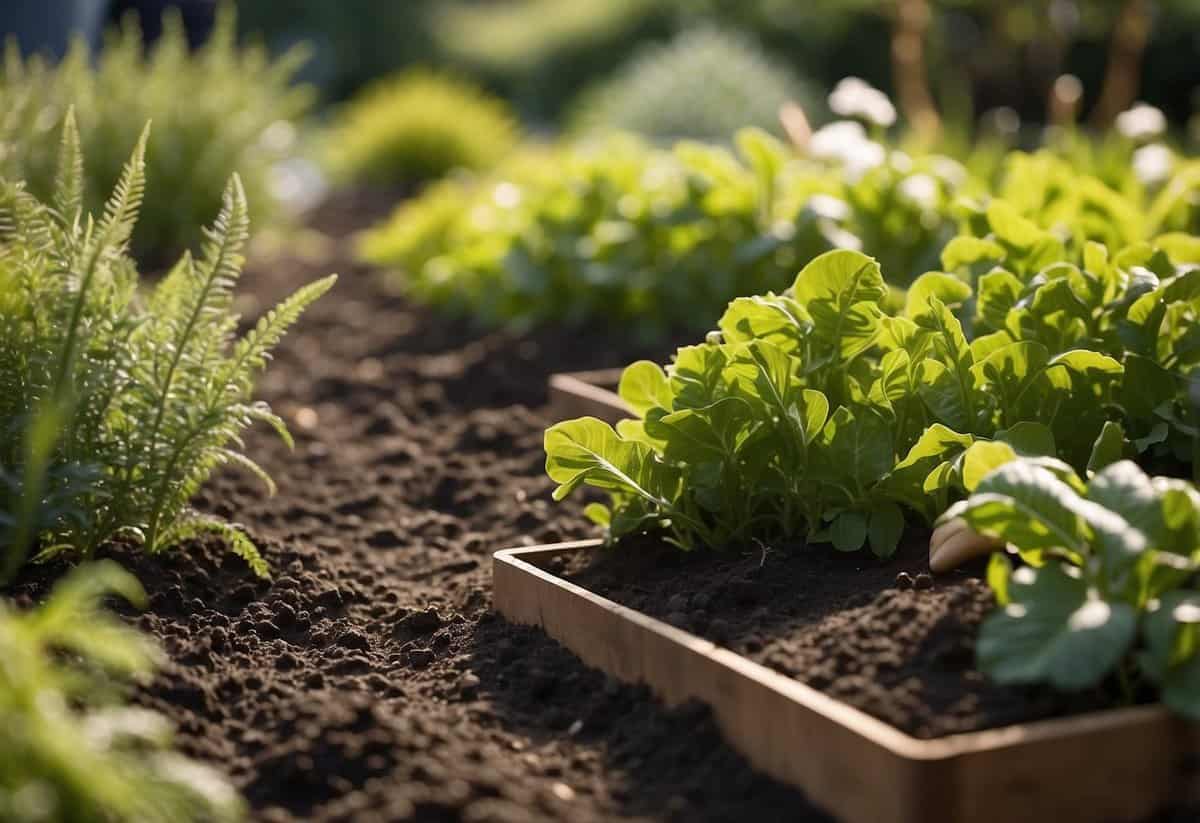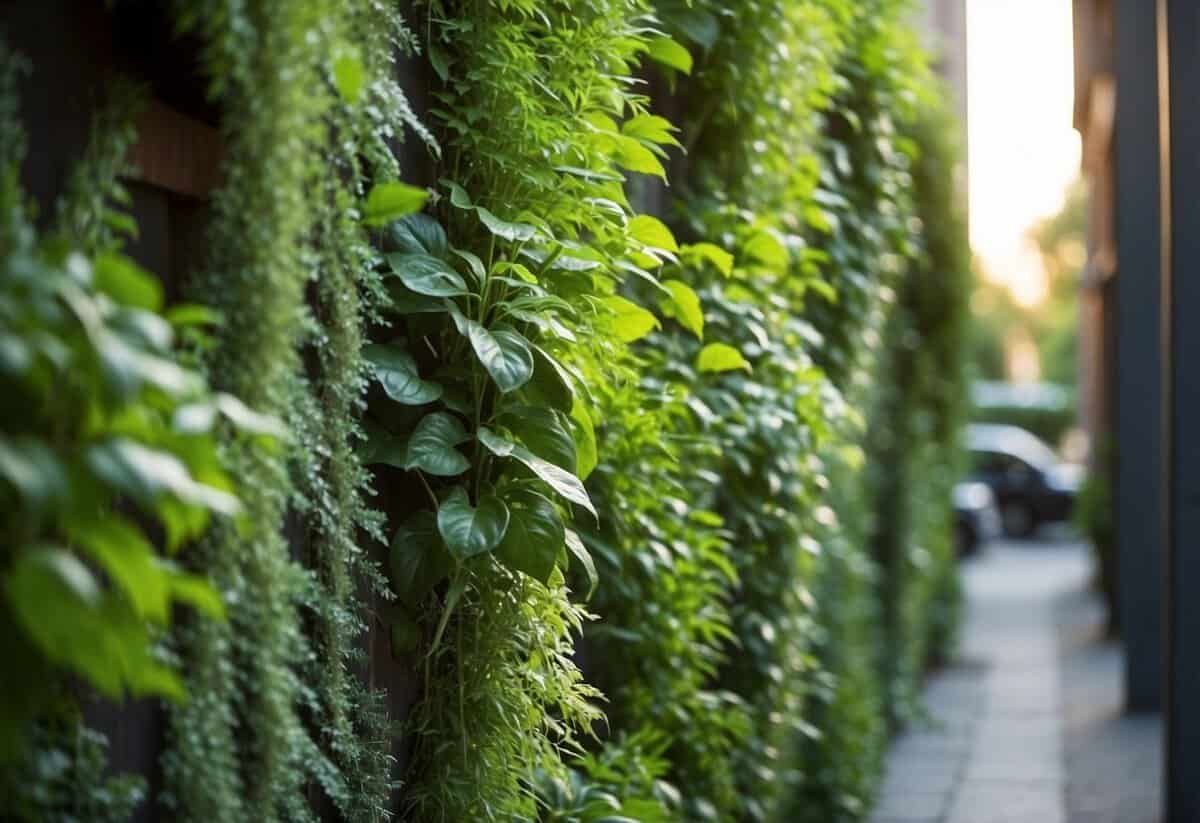Best Garden Tips New Zealand: Grow a Thriving Kiwi Garden
Gardening in New Zealand offers a unique and enjoyable experience, thanks to its diverse climate and rich soil. From growing vibrant flowers to cultivating your own vegetables, there are endless possibilities for creating a beautiful and productive garden. Whether you are a seasoned gardener or just starting, there are many tips to help you make the most of your garden space.

You can transform your garden into a thriving oasis with a bit of planning and care. Embracing native plants and following local seasonal tips can lead to a lush, colorful, and sustainable garden. Dive into the world of New Zealand gardening, and discover how to make your garden flourish.
1) Soil pH Testing

Testing the pH of your garden soil is important for healthy plant growth. You can use a home testing kit, which is simple and effective. Make sure to take a sample from just below the surface for an accurate reading.
An electronic pH meter is another option. These devices come with a probe that you insert into the soil.
For a more hands-on method, you can try adding vinegar to your soil sample. If it fizzes, your soil is likely alkaline. Aim for a pH between 6 and 7 for most plants. This ensures your plants have the right conditions to thrive.
2) Composting Tips

Composting is an easy way to enrich your garden. Start by gathering organic materials like apple cores, coffee grounds, dried leaves, and shredded paper. Chop them up into smaller pieces for quicker breakdown.
Choose a spot for your compost that gets some sunlight. Mix in soil and water to keep it moist but not too wet. Stir the pile every few weeks to add air.
You can even bury a composter in your garden bed. Dig a hole about 45cm deep, place the composter inside, and add pre-moistened newspaper strips and leaves. This creates a great environment for composting. For more details, check here.
By following these simple steps, you’ll have nutrient-rich compost to improve your soil.
3) Watering Schedule

Water your garden deeply rather than frequently. This helps plants develop strong, deep roots.
Consistency is key. Water your plants early in the morning or late in the evening to reduce water loss from evaporation. Aim to keep the foliage dry to avoid fungal diseases.
Adjust your watering according to the seasons. During dry periods, you’ll need to water more often.
4) Companion Planting

Companion planting is a clever way to help your garden thrive. By teaming up certain plants, you can improve growth, keep pests away, and boost yields.
For example, growing celery with beans and brassicas benefits all three. Similarly, basil and tomatoes grow better together, and you get tastier tomatoes.
Planting carrots and leeks together helps reduce pests. Herbs like sage and thyme also work well with vegetables like cabbages and any brassica, respectively.
5) Mulching Techniques

Applying mulch correctly can make a huge difference in your garden. First, prepare the soil by removing weeds and debris. This gives the mulch a clean area to cover and prevents weed growth.
Spread a 2-4 inch layer evenly over the soil, but keep it away from plant stems. This helps the soil retain moisture and reduces weed growth.
Use organic materials like tree bark or straw. Remember to top up the mulch regularly as it decomposes. This keeps it effective in helping your garden thrive.
For more detailed advice, check out this guide to garden mulch.
6) Pruning Methods

Pruning is key to keeping your garden healthy and looking great. The best time to prune trees is during their dormant state, often in winter. This helps the tree heal faster and reduces the risk of disease.
For roses, trim dead and diseased branches first. Make cuts just above an outward-facing bud at an angle to prevent water from running into the cut. This helps shape the rose bush.
When pruning large branches, use a pruning saw to make cuts in stages. Start cutting from the underside and then the top until the cuts meet. This method ensures a clean and safe removal.
Using clean, sharp tools like pruning shears or secateurs is essential for making precise cuts and promoting faster healing of the tree. After pruning, feeding your plants with an organic-based fertilizer can improve soil health. Moreover, you can use pruned stems from plants like hydrangeas and roses to propagate new plants.
7) Pest Control

Keeping your garden free from pests can be easier with a few good tips. Start by using organic methods like crushing garlic and mixing it with water to make a spray. This is a natural way to keep insects at bay.
You can also try eco-friendly products like eco-neem or eco-oil. They help manage pests without harming your plants or the environment.
For pests like aphids, make sure to regularly check your plants. Prevent infestations before they get out of hand. Simple steps like these can keep your garden healthy and thriving.
8) Using Native Plants

Native plants are a fantastic choice for a New Zealand garden. They help your garden thrive and connect you with the local environment.
You can create beautiful contrasts with native foliage. Pair greens with shades like purples or oranges using plants like Libertia Peregrinans.
Incorporating various textures and shapes can add interest. Try Nikau Palms and Puka trees underplanted with ferns for a lush look, or use sprawling natives like Muehlenbeckia Astonii.
Don’t forget about soil health. Enriching soil with organic matter such as compost ensures robust native plant growth.
9) Seasonal Planting

In New Zealand, it’s important to plant the right vegetables at the right time of year.
For instance, during autumn and spring, you can plant rhubarb and feed it with fertilizer for best growth.
In March, try planting lettuce, spinach, and spring onions directly into the ground.
You can also plant Brussels sprouts in cooler spots to prevent bitterness.
10) Vertical Gardening

Vertical gardening is a great way to use small spaces. You can grow a variety of plants, including lettuce, rocket, spinach, and strawberries.
Make sure to water your vertical garden at least twice a day. Regular feeding with liquid fertilizer helps keep your plants healthy.
Using a robust trellis or garden wire can support climbing plants. This method saves space and adds a unique look to your garden.
Understanding New Zealand’s Climate

New Zealand’s climate offers diverse conditions ideal for various gardening needs. It is crucial to understand these regional differences and the best times for planting to achieve optimal gardening results.
Regional Climate Variations
New Zealand’s climate varies significantly across its regions. In the North Island, you will experience warmer, subtropical weather. Auckland, for example, enjoys mild winters and warm summers, making it suitable for a wide range of plants.
Conversely, the South Island has a more temperate climate. Christchurch, with its average temperature of 16 degrees Celsius, provides a great environment for many flowers and vegetables. The West Coast sees high rainfall, reaching up to 1,200 millimeters per year, which supports lush greenery.
Understanding these regional differences helps you choose the right plants for your garden. Matching plants to the local climate ensures they thrive and attract native wildlife, adding to your garden’s biodiversity.
Best Planting Seasons
In New Zealand, the best planting seasons vary for different plants. Generally, autumn is perfect for sowing hardy annuals and perennials because the soil retains summer heat. This season in New Zealand is also ideal for making compost, as falling leaves provide plenty of material.
Spring is best for planting most vegetables and annual flowers. The warmer temperatures promote rapid growth, and the frequent rains provide necessary hydration.
In the cooler regions, you should wait until late spring to plant frost-sensitive varieties. In the warmer regions, you can start planting earlier in the season. Understanding when to plant different species ensures a successful garden year-round.
Soil Preparation and Fertilization

To create a thriving garden in New Zealand, it’s crucial to prepare your soil properly and use the right fertilizers. The quality of your soil and the type of fertilizer you choose will greatly impact the health and yield of your plants.
Testing and Improving Soil Quality
Before planting, you should test your soil to understand its composition and pH level. Soil pH ideally ranges between 6 and 7. You can test this using a home test kit or by sending a sample to a lab. If the pH is too high or too low, you can adjust it with lime to counteract acidity or sulfur to lower pH.
Aeration is important to strengthen roots. You can use a roto-tiller or cultivator to loosen the soil. This process also helps with water drainage. Adding organic materials like compost or sand during tilling improves soil structure and makes it easier for roots to grow.
Organic vs. Chemical Fertilizers
When choosing fertilizers, you have two main options: organic and chemical. Organic fertilizers include compost, manure, bone meal, and fish emulsion. These improve soil health over time by adding nutrients and beneficial microbes. They are safer for the environment but may take longer to show results.
Chemical fertilizers, on the other hand, are fast-acting and provide specific nutrients like nitrogen, phosphorus, and potassium. These are useful for quick growth spurts but can harm soil health in the long run if overused. Always follow the recommended usage instructions to prevent damaging your plants.
By carefully testing and improving your soil and choosing the right fertilizers, you can ensure your garden thrives.
Watering Techniques

Using effective methods to water your garden can help plants thrive. Some methods save water, while specific plants can handle less water better.
Efficient Watering Methods
Water deeply rather than frequently. This helps roots grow deeper, making plants more drought-tolerant. Use drip irrigation or soaker hoses to deliver water directly to the roots. These methods reduce water waste and keep foliage dry, reducing the risk of fungal diseases.
Consider watering early in the morning or late in the evening when evaporation rates are lower. This means more water reaches the plants. Automated sprinklers with timers are useful, but be sure to adjust them to avoid overwatering. Temporary shade cloths or outdoor umbrellas can also help reduce water loss from evaporation.
Drought-Resistant Plants
Choose drought-resistant plants for your garden. These plants require less water and can survive dry conditions better. Native plants, like many from New Zealand, are excellent choices. They are adapted to local conditions and often need less care.
Cacti, succulents, and some grasses are also good options. These plants have special adaptations, like thick leaves or deep roots, to conserve water. By planting drought-resistant species, you can maintain a beautiful garden even during dry periods. This approach also supports sustainable gardening practices.
Pest and Disease Management

Keeping your garden healthy in New Zealand involves identifying common pests and using natural control methods to deal with them.
Common Garden Pests in New Zealand
In New Zealand, some pests commonly found in gardens include aphids, whiteflies, and slugs.
-
Aphids: These tiny insects can be green, black, or brown and often cluster on plant stems and leaves. They suck the sap from plants, which can cause leaves to curl and stunt growth.
-
Whiteflies: These small, white insects can be found on the underside of leaves. They feed on plant juices and can spread plant diseases.
-
Slugs: Slugs can cause significant damage to plants by eating leaves, stems, and roots. They are often active at night or during wet conditions.
If you notice any of these pests in your garden, it’s essential to act quickly to prevent them from spreading and causing more damage.
Natural Pest Control Solutions
Using natural pest control methods can be effective and environmentally friendly. Here are some options:
-
Beneficial Insects: Ladybugs and lacewings can help control aphids by feeding on them. Encouraging these insects in your garden can provide natural pest control.
-
Neem Oil: This natural oil can be used to control a variety of pests, including aphids and whiteflies. It works by disrupting the life cycle of the insects.
-
Coffee Grounds: Sprinkling coffee grounds around your plants can deter slugs. The texture is unpleasant for them, and the caffeine is toxic.
-
Companion Planting: Planting certain plants together can help deter pests. For example, planting marigolds with your vegetables can repel insects like whiteflies.
These methods can help you manage pests while keeping your garden safe for other wildlife and beneficial insects.







